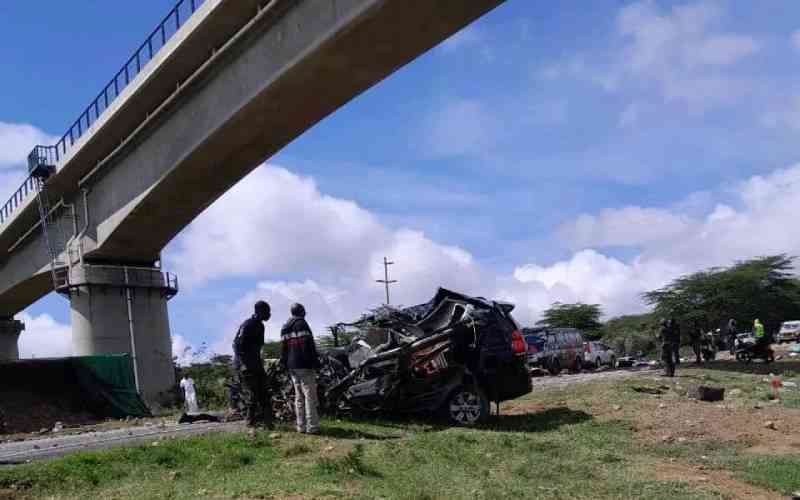Road accidents pose serious adverse effects on the national economy as the carnage continues to take away the lives of the country’s most productive segment of the population.
Statistics indicate that while efforts to enhance road safety are yielding fruits with a drop in fatalities from 42 per cent in 2014 to 20 per cent last year, more still needs to be done to save lives from careless driving.
The public transport sector has grown tremendously in the span of a short period. This has been witnessed in the rising of the number of registered motor cycles from a paltry 2,500 units to 134,500 units last year; having an average of 9,000 motorcycles registered every month.
This represents 54 per cent of the total number of registrations, surpassing the registration of all other classes of vehicles combined.
While the increase in motorcycles has improved accessibility in our urban and rural areas and indeed created employment for our youths, there has been a significant increase in the number of deaths and injuries attributed to motorcycles.
This is particularly due to the fact that majority of these motorcycles are used as taxis by poorly trained riders, majority of whom are unlicensed and do not appreciate the importance of their safety and that of their passengers.
In the course of last year, motorcycles contributed 21 per cent of the total fatal road crashes. This increase in motorcycle fatalities is attributable to the fact that compared to car occupants, motorcycle riders and their passengers are relatively unprotected.
The likelihood of serious injury or death faced by motorcyclists is therefore higher than for any other groups of users of motorised transport. This high road traffic crashes are putting a heavy burden on families, communities and the health system in general.
It is now common to find special wards in local hospitals specifically reserved for motor-cycle accident patients.
It is estimated that road accidents cost the Kenyan economy an average of Sh300 billion or 5.6 per cent of the Gross Domestic Product (GDP) annually.
Accidents kill at least 3,000 Kenyans every year, majority of those who lose lives being in the age bracket of 15 and 44 years old.
This is a challenge that we must all commit ourselves to deal with. There is need to encourage greater community involvement in addressing this problem through public barazas by county administrators and road safety sensitisation programmes by all stakeholders including the National Transport and Road Safety Authority (NTSA), the Kenya Police Service, the National Road Safety Trust and the Motor Cycle Assemblers Association of Kenya.
Despite the institutionalisation of the NTSA and its mandate as the country’s main road safety agency, there is need for close collaboration to enhance its capacity to enforce traffic rules across the country.
Most of our roads still lack basic facilities for pedestrians, non-motorised and intermediate means of transport, presenting a major engineering challenge to road users. Road agencies need to do a better job by improving design standards, safety audits and black-spot treatment programs.
While road safety is still largely a national government function, county governments cannot be left out in road safety endeavours.
Stay informed. Subscribe to our newsletter
County governments can assist by guarding against encroachment on highways by small-scale traders and hawkers, and the rampant vandalism of road signs.
They need to regulate boda bodas, which have emerged as an alternative means of transport, creating a major road safety challenge in both urban and rural Kenya.
The Ministry of Transport and Infrastructure is focusing on the deployment of information and communication technologies (ICT) to enhance road safety.
The proposed Transport Integrated Management Systems (TIMS) project promises to deliver a Universal Policing Unit (UPU), mobile policing gadgets, instant fine systems, Smart Driver License and new-generation number plates as ways of improving road safety.
We are also in the process of developing a new driving and testing curriculum to improve driver skills, attitudes, testing and licensing, which is expected to be ready for implementation by the end of this month.
Of utmost importance in dealing with an issue as complex as road safety is its measurement. NTSA and other critical agencies on road safety issues have already adopted international best practice in the measurement of road safety data.
As a result, where we previously concentrated only on absolute headline figures, we shall now be more granular in our analysis and take into cognisance contextual realities.
The measures we take in our road safety campaign will only be useful if based on scientific evidence.
Road safety is the responsibility of all of us as citizens, Government agencies and the corporate world.
We all need to play an active role in ensuring road safety within our environment.
 The Standard Group Plc is a
multi-media organization with investments in media platforms spanning newspaper
print operations, television, radio broadcasting, digital and online services. The
Standard Group is recognized as a leading multi-media house in Kenya with a key
influence in matters of national and international interest.
The Standard Group Plc is a
multi-media organization with investments in media platforms spanning newspaper
print operations, television, radio broadcasting, digital and online services. The
Standard Group is recognized as a leading multi-media house in Kenya with a key
influence in matters of national and international interest.
 The Standard Group Plc is a
multi-media organization with investments in media platforms spanning newspaper
print operations, television, radio broadcasting, digital and online services. The
Standard Group is recognized as a leading multi-media house in Kenya with a key
influence in matters of national and international interest.
The Standard Group Plc is a
multi-media organization with investments in media platforms spanning newspaper
print operations, television, radio broadcasting, digital and online services. The
Standard Group is recognized as a leading multi-media house in Kenya with a key
influence in matters of national and international interest.









